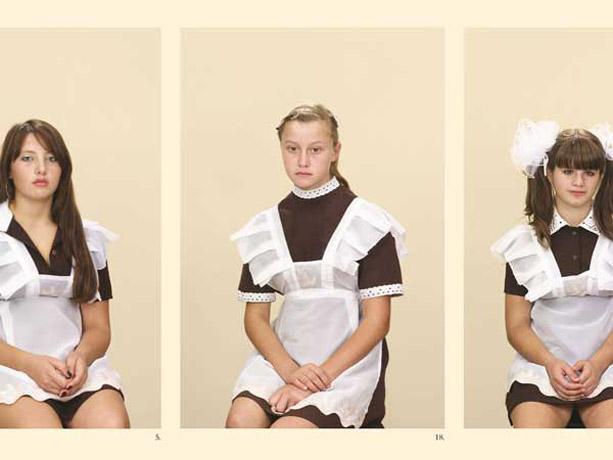A Living Man Declared Dead and Other Chapters I – XVIII at the Corcoran Gallery of Art
By • August 15, 2013 0 1298

There is an exacting notion of displacement that permeates the current work of artist Taryn Simon, on display at the Corcoran Gallery of Art through Feb. 24 of next year. At its essence, A Living Man Declared Dead and Other Chapters I – XVIII is a tapestry of 18 fractured and unresolved stories of small familial communities all over the world. This is not an easy show to deal with. It is psychologically unsettling, often times disturbing, and frankly cold, its presentation rigid, systematic. However, the experience is unlike anything else on display in Washington.
The show asks us to deal with pasts and realities that are not our own in a way that is neither fictional nor specifically historical. It tests our limits of empathy and estrangement, ultimately exposing our own interpersonal narratives in how we cope with and perceive these lives we will never know but instinctively judge.
Simon, whose past documentary work has included a series on wrongly convicted prisoners (“The Innocents”) and another on items detained at U.S. customs and post offices (“Contraband”), is fascinated by the concept of bloodlines. For A Living Man, she spent four years traveling the world, researching, cataloguing, determining an order for, and finally photographing the ascendants and descendants of eighteen individuals and their family trees. She categorized her findings into 18 “chapters,” with each corresponding to a single bloodline.
They are each displayed as a panel that includes a grid of portraits of the family unit, a written statement about the bloodline’s significance, and supporting photographs acting as narrative elements to the stories she came across in her research. Each includes a numbered key with biographical information about each subject who sat for her.
In Chapter I of the project, from which the title of the series takes its name, Simon focuses on the story of a man and three of his living family members in India who died—at least as reported by their local government. Accordingly, they are listed as legally dead in the local registry, which was done to deny them any hereditary transfer of land.
Another chapter documents Latif Yahia, an Iraqi citizen who was forced to become the body double of Uday Hussein, the psychopathic son of Saddam Hussein. Simon tells the story of Yahia’s facial reconstruction surgeries and of the threats he received upon his family when he initially refused to go along with the plan. In a frame on the photographic evidence page sits a gold-plated Iraqi AK-47 and sniper rifle, both seized by the Americans when storming Uday’s palace. In a rare, if odd, moment of comical brevity, Yahia does impersonations of Uday.
Chapter XVII, which documents a group of displaced children from Ukranian orphanages, is an interesting sample. The lack of a clear bloodline is actually a defining factor. The orphanages for children between the ages of six and 16 are often just a temporary holdover before the children are released and immediately and targeted for human trafficking, prostitution and child pornography. The images show children dressed in clothing that is surprisingly nice but rarely well fit (as they are donated).
No one is smiling in any of these portraits. At first glance from across the room, this could be an entomological display—hundreds of moths and butterflies in a glass case.
“The works are designed to imply patterns and codes and systems, and to imagine the collision of order and disorder,” says Simon, “representing something that came before, that’s happening now and will happen again.”
Up close, Simon’s subjects indeed look like they were posing for a much more archaic portrait—say, for instance, a 17th-century oil painting. Like the curious, young Infanta Margarita in Diego Velázquez’s Las Meninas, perfectly still and wary of the artist who is capturing her likeness, Simon’s subjects face the camera, arms down, unflinching and without emotion save for the corrosion of despair, pride, resentment, fear or whatever default setting that has come to define their existence.
Ultimately, as the work suspends in time these slow and unrelenting human dramas, what the audience is left with is an ominous sense of cyclicality: are these currents of history that its players are inevitably caught in, just ripples fol- lowing in the wake of their past? And will their next generations evolve, or are they crashing against the shore only to get pulled back out to sea?
Without asserting an opinion on the wide array of social and political discord rampant through these visual bloodlines, Simon packs a brass-knuckled punch to the emotional gut of her audience. The displacement lies in the external forces of governance, religion territory, power and luck that play out during the lives of every individual, clashing against internal forces of psychological and physical inheritance.
“The numbing persistence of birth and death and the accumulation of all the stories between—are all of these stories and lives just piling up, or is something unfolding?” Simon asks. “There is no conclusion or overarching declaration, it’s about the difficulty and understanding of what we’re all doing here and what it all leads to.”

